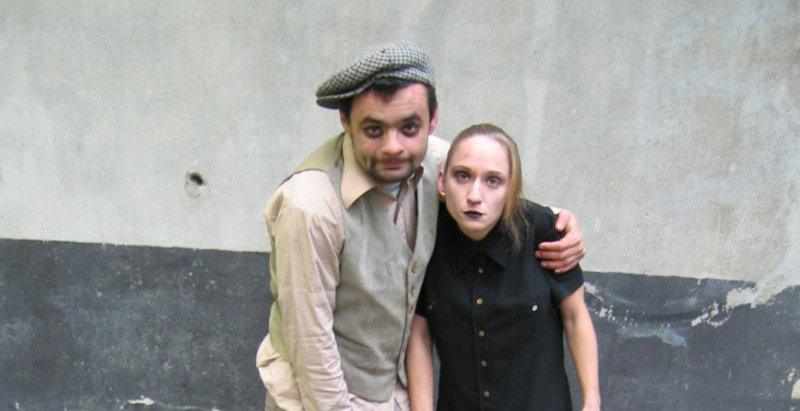Winchester Hat Fair (now in its 39th year) has always had its roots in street busking and performance art, from the likes of Forkbeard Fantasy to the late, great art nuisance Ian Hinchliffe. So it was good to return in 2013 to see that those traditions are still being adhered to, but that the developments in UK street arts over the last ten years have added some bigger, more technically complex shows into the mix.
If you want an example of a classic street clowning show then there really is none better than Fraser Hooper’s. He never rushes, his act retains a fresh quality to it (I’ve seen some of his routines and gags more than several times), and he has a winning way with an audience. He picks children from the audience to come up and assist him, and although they are often treated in an offhand manner there’s not a trace of weary cynicism in his act.
Makadam Kanibal from France presented a show, Le cirque des curiosités, which had its roots in circus routines but which was the polar opposite of Fraser Hooper. The set was a rough little Art Brut house made of driftwood and polythene with a chimney sticking out of the barely adequate roof. It was inhabited by a couple who were part Deliverance and part Tom Waits at his most hobo-esque.
There was juggling with axes, a soup ladle (rather than a sword) got swallowed, a shower was taken in an angle-grinder’s sparks, and the man knocked the woman up midway through so that the show could culminate in the birth of a pig-baby. The humour was rude, crude and it demonstrated how the French are pushing circus into places which aren’t about the performer’s need for an audience to like them. In fact, many disgruntled parents led their children off as the action unfolded.
Wet Picnic’s show The Lift, performed from a moving booth, presented a ‘This is Your Life’ moment for individual members of the public. It’s quite performer heavy (four if I counted correctly), and, though technically well realised, the balance between the individual experience of the person selected to go into the booth and what a larger audience gets to see isn’t there yet.
Pif Paf’s Something to Hold presented a dance/acrobatic piece based around a small scaffolding structure which acted as a crane and a pair of scales which could rotate. The performers climbed all over the structure and spun around and around on it, one performer counterbalancing the other. The narrative concerned an astronomer searching for reason and truth but being continually led astray by two anarchic spirits. In the end an equilibrium was achieved between the two opposites. Big themes, and in some ways it was a pity that the crane structure wasn’t bigger in order to emphasise this.
The horizontal bar rotating on an upright principle was also used by Ray Lee in his sound installation Chorus, but instead of two performers there were two speakers at the end of each bar. The bars were mounted onto four-metre-high tripods. There were about 12-15 of these structures which were put into play gradually by technicians who milled about throughout the concert. The music is electronically generated ambient sound, the rhythms of which subtly change over the 30 minutes. You walk amongst the tripods and the music acquires a rich spatial quality. The installation was on the Dean’s Garden of Winchester Cathedral, and in response to the location the rhythm and texture of the music suggested bell-ringing at times.
It’s a very simple idea, technically quite complex, and Lee makes the most of the limitations of the form to create a powerful sensation.


